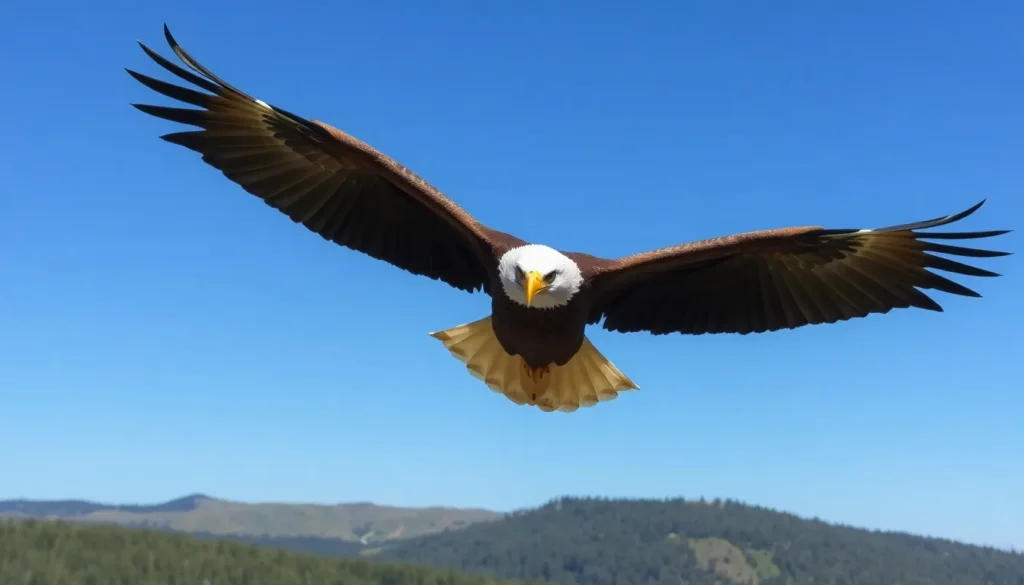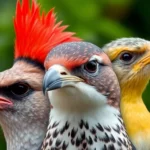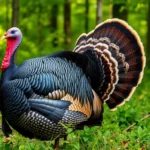Birds have captured our imagination for thousands of years, soaring through our myths, religions, and cultural traditions as powerful symbols of freedom, wisdom, and spiritual connection. From the majestic eagle representing strength and courage to the gentle dove embodying peace and hope, these feathered messengers carry profound meanings that transcend borders and unite humanity’s collective consciousness.
We’ve woven bird symbolism into every aspect of our lives – from ancient Egyptian hieroglyphs and Celtic mythology to modern logos and tattoo art. Each species tells its own story, whether it’s the owl’s association with knowledge, the phoenix’s promise of rebirth, or the raven’s mysterious connection to the supernatural.
Understanding bird symbolism isn’t just about appreciating ancient wisdom; it’s about unlocking a universal language that speaks to our deepest aspirations and fears. Let’s explore how these magnificent creatures continue to influence our modern industry and personal journeys.
The Historical Significance of Bird Symbols
Ancient cultures recognized birds as powerful messengers between earthly and divine realms. Archaeological evidence spanning thousands of years reveals how civilizations across continents developed sophisticated bird symbolism systems that influenced their spiritual beliefs, political structures, and artistic expressions.
Ancient Civilizations and Their Avian Icons
Egyptian civilization elevated the falcon to represent Horus, their sky god who protected pharaohs and symbolized royal power. Hieroglyphic records from 3100 BCE show the ibis bird associated with Thoth, the god of wisdom and writing, demonstrating how Egyptians connected exact bird species to intellectual and spiritual concepts.
Mesopotamian cultures carved eagle motifs into palace walls and royal seals, with the double-headed eagle becoming a symbol of imperial authority that spans from ancient Sumer to modern heraldry. Greek pottery from 800-300 BCE frequently depicts owls alongside Athena, establishing the bird as an enduring symbol of strategic thinking and scholarly pursuit.
Roman legions carried eagle standards called aquilae into battle, with each legion treating their golden eagle as a sacred object that represented Rome’s divine mandate to rule. Chinese dynasties from the Han period (206 BCE – 220 CE) incorporated phoenix imagery into imperial robes and architecture, using the mythical bird to represent the empress and feminine power.
Celtic tribes carved raven symbols into stone monuments and metalwork, viewing these intelligent birds as guides to the otherworld and protectors of warriors in battle.
Religious and Mythological Bird Representations
Christianity adopted the dove as its primary avian symbol after Gospel accounts described the Holy Spirit descending “like a dove” during Jesus’s baptism. Early Christian art from the 2nd century CE shows doves representing peace, purity, and divine communication in catacomb paintings and mosaics.
Hindu traditions feature Garuda, the eagle-like mount of Vishnu, in temple sculptures and religious texts dating back 2,500 years. Buddhist monasteries across Asia display peacock imagery to represent compassion and watchfulness, with the bird’s ability to consume poisonous snakes symbolizing the transformation of negative emotions.
Norse mythology presents ravens Huginn and Muninn as Odin’s companions who gather information from across the nine realms. Islamic calligraphy and decorative arts incorporate stylized bird forms, though exact species representations vary based on regional artistic traditions and scholarly interpretations.
Indigenous American cultures developed complex bird symbolism systems, with the Thunderbird representing power over storms and natural forces in Pacific Northwest totem poles and ceremonial objects. Aztec codices depict Quetzalcoatl as a feathered serpent, combining bird and reptile elements to represent the union of earth and sky.
Common Bird Symbols and Their Meanings
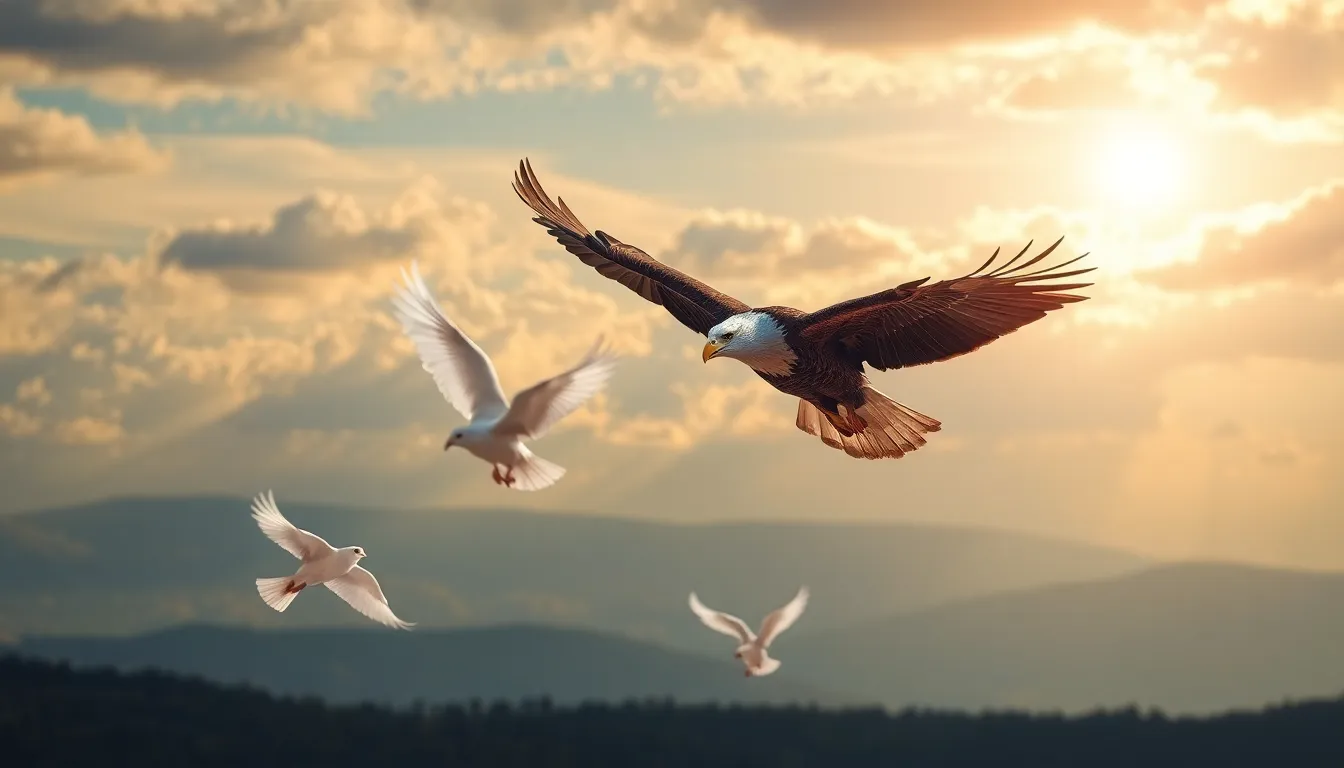
Bird symbols carry profound meanings that resonate across cultures and centuries. These avian representations connect us to universal concepts that shape our understanding of the natural and spiritual worlds.
Eagles: Power and Freedom
Eagles embody the ultimate symbol of strength and independence in cultures worldwide. Ancient civilizations revered these majestic birds as divine messengers, with the Roman Empire adopting the eagle as its primary military standard. Native American tribes view eagles as sacred beings that connect the earthly area with the Great Spirit.
Modern nations continue this tradition by featuring eagles prominently on their emblems and currency. The United States displays the bald eagle on its national seal, representing the country’s sovereignty and democratic values. Olympic ceremonies often incorporate eagle imagery to symbolize athletic excellence and competitive spirit.
Spiritual traditions associate eagles with higher consciousness and divine protection. These powerful birds soar at extraordinary altitudes, making them natural symbols for transcendence and spiritual ascension. Their keen eyesight represents clarity of vision and the ability to see beyond surface appearances.
Doves: Peace and Spirituality
Doves represent peace and divine love across multiple religious and cultural contexts. Christianity features the dove as the Holy Spirit’s manifestation during Jesus’s baptism, establishing its role as a sacred messenger. Ancient Greeks connected doves to Aphrodite, linking these gentle birds to love and beauty.
Political movements adopted the dove as their universal peace symbol during the 20th century. Pablo Picasso’s dove lithograph became an international icon following the 1949 Industry Peace Congress. Modern peace negotiations and diplomatic ceremonies frequently incorporate dove imagery to emphasize reconciliation and harmony.
White doves appear in wedding ceremonies worldwide, symbolizing the couple’s commitment to peaceful union. Release ceremonies use doves to mark important life transitions such as memorials and celebrations. Their monogamous nature reinforces their association with faithful partnerships and enduring love.
Ravens and Crows: Mystery and Wisdom
Ravens and crows carry complex symbolic meanings that blend wisdom with mystery across cultures. Norse mythology features two ravens, Huginn and Muninn, as Odin’s companions who gather intelligence from across the nine realms. Celtic traditions regard ravens as prophetic birds capable of foretelling future events.
These intelligent corvids demonstrate problem-solving abilities that rival those of primates, reinforcing their association with cunning and strategy. Indigenous cultures of the Pacific Northwest honor Raven as both creator deity and trickster figure who shapes the industry through clever schemes. Their black plumage connects them to the unknown and the supernatural area.
Literary traditions use ravens to represent omens and psychological depth. Edgar Allan Poe’s “The Raven” established these birds as symbols of haunting memory and inescapable fate. Gothic literature continues to employ ravens as harbingers of transformation and hidden knowledge.
Owls: Knowledge and Intuition
Owls symbolize wisdom and intuitive knowledge across diverse cultural traditions. Ancient Athens adopted the owl as Athena’s companion, making it the official symbol of wisdom and learning. Greek coins featured owl imagery to represent the city-state’s intellectual achievements and philosophical pursuits.
Nocturnal hunting patterns link owls to hidden knowledge and the ability to see truth in darkness. Their exceptional hearing and silent flight make them symbols of heightened perception and spiritual awareness. Educational institutions worldwide use owl mascots to represent scholarly excellence and academic achievement.
Indigenous American cultures view owls as guardians of sacred knowledge and protectors of ancient wisdom. Some tribes consider owl encounters as messages from ancestors or warnings about impending change. Modern spiritual practices incorporate owl symbolism to represent meditation, introspection, and psychic abilities.
Bird Symbols in Different Cultures
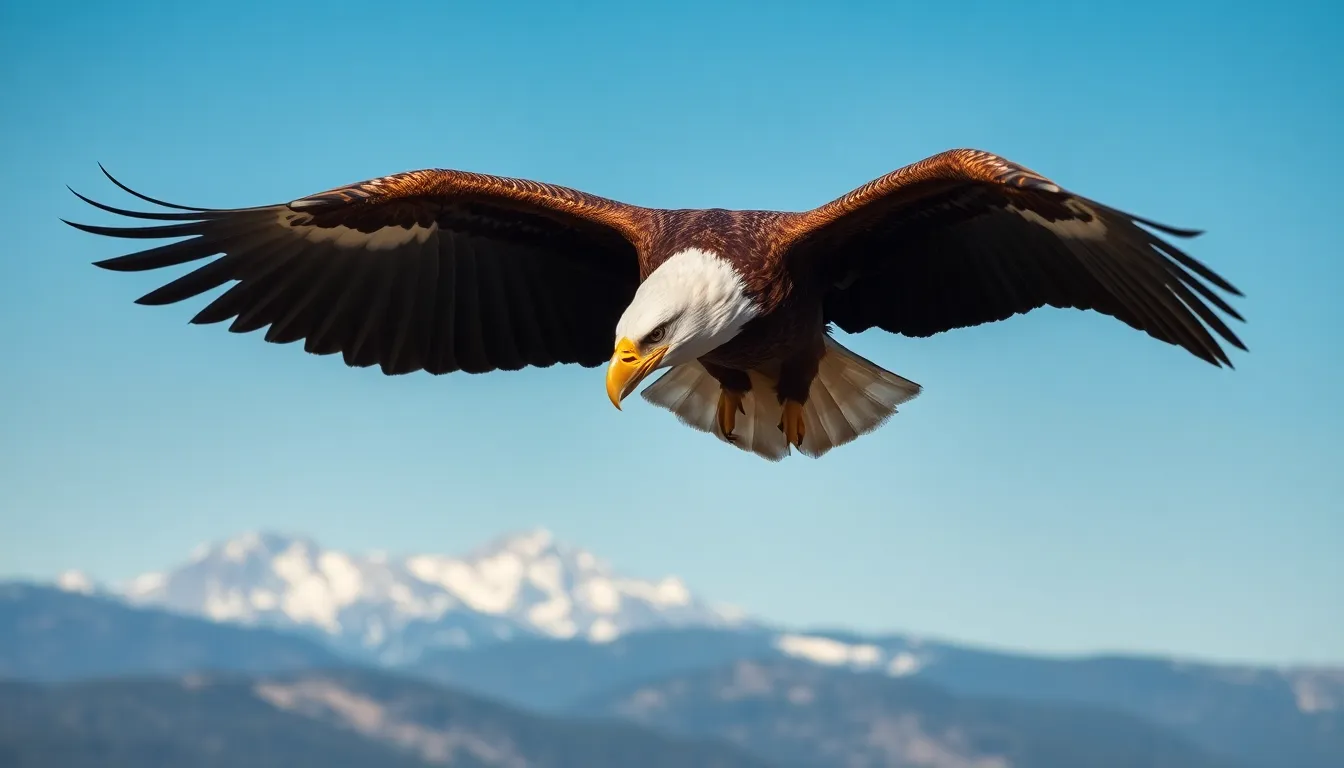
Bird symbolism varies dramatically across cultures, reflecting unique spiritual beliefs and historical experiences. We explore how different societies have interpreted avian messengers throughout their cultural development.
Western Symbolism
Western cultures developed distinct bird symbol meanings rooted in Greek mythology, Roman politics, and Christian theology. The eagle became synonymous with imperial power across European empires, representing divine authority and military strength in countries like Germany, Austria, and the United States. Doves carried Christian significance as symbols of the Holy Spirit, appearing in Renaissance art and medieval manuscripts as representations of divine grace.
Celtic traditions embraced ravens as prophetic birds, connecting them to battlefield outcomes and otherworldly knowledge. The phoenix emerged from Greek mythology to symbolize resurrection and renewal, influencing Western literature and philosophical thought for centuries. Swans represented purity and transformation in Germanic folklore, while robins became associated with spring’s arrival and new beginnings across Northern European cultures.
Medieval heraldry incorporated many bird symbols, with falcons representing nobility, pelicans symbolizing self-sacrifice, and peacocks denoting pride and immortality. These emblematic meanings persist in modern Western contexts, appearing in national symbols, corporate logos, and artistic expressions.
Eastern Traditions and Beliefs
Eastern cultures developed sophisticated bird symbolism systems that integrated spiritual philosophy with natural observation. Chinese tradition reveres the phoenix (Fenghuang) as the supreme bird symbol, representing imperial virtue, harmony between yin and yang, and the empress’s divine authority. Cranes symbolize longevity and immortality in Chinese, Japanese, and Korean cultures, often depicted in art as messengers between earth and heaven.
Japanese culture embraces exact bird meanings through Shintoism and Buddhism. The crow serves as a divine messenger in Shinto beliefs, while the crane represents peace and good fortune. Cherry blossom season features nightingales (uguisu) as symbols of spring’s arrival and poetic inspiration.
Hindu traditions incorporate Garuda as Vishnu’s mount, symbolizing speed, martial prowess, and the fight against evil forces. Peacocks represent beauty, pride, and spiritual awakening in Indian culture, associated with various deities including Saraswati and Krishna. Tibetan Buddhism uses the snow lion and mythical birds to represent fearlessness and spiritual elevation.
Chinese feng shui practices assign exact bird symbols directional significance: the red phoenix governs the south, representing fame and recognition, while the rooster symbolizes punctuality and reliability in the Chinese zodiac.
Indigenous and Native American Bird Meanings
Indigenous cultures across the Americas developed complex bird symbolism systems reflecting their intimate connection with natural environments. The Thunderbird stands as the most powerful symbol among many Plains tribes, representing divine power, storm control, and protection from evil spirits. This massive eagle-like creature appears in totem poles, pottery, and ceremonial objects throughout Pacific Northwest and Great Plains cultures.
Pueblo peoples regard eagles as sacred messengers carrying prayers to the Creator, using eagle feathers in religious ceremonies and traditional dances. The Hopi tribe associates different birds with cardinal directions: eagles with the sky, hawks with the east, and owls with the west and death.
Raven holds special significance in Pacific Northwest cultures, particularly among the Tlingit, Haida, and Inuit peoples. These traditions portray raven as both creator and trickster, responsible for bringing light to the industry while also causing mischief through clever schemes.
Mesoamerican cultures elevated Quetzalcoatl, the feathered serpent, as a primary deity combining bird and reptile symbolism. This figure represented wind, air, and the planet Venus across Aztec, Maya, and Toltec civilizations. Hummingbirds carried particular importance for Aztec warriors, symbolizing resurrection and the souls of fallen soldiers.
Many tribes assign exact meanings to common birds: cardinals represent devotion and relationships, blue jays symbolize intelligence and curiosity, and hawks embody vision and spiritual messages from ancestors.
Modern Usage of Bird Symbols
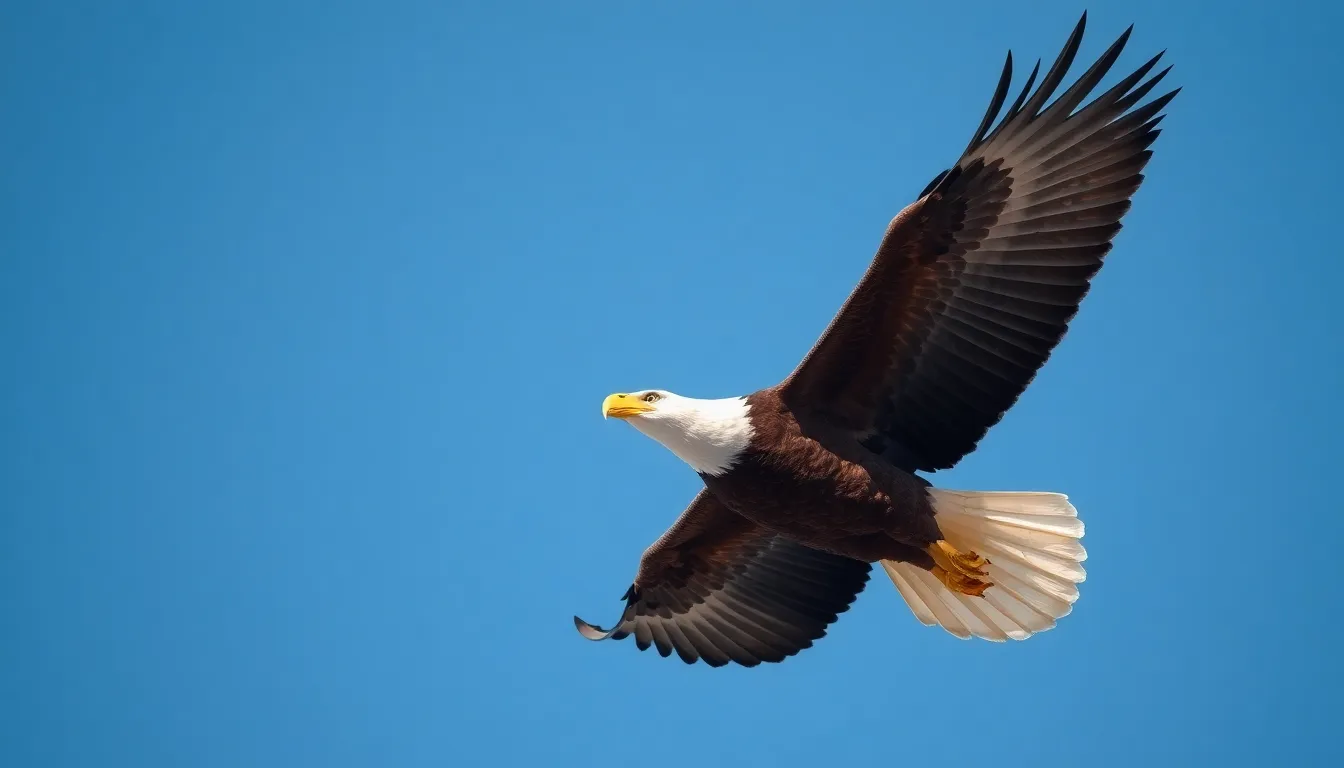
Modern society continues to embrace bird symbols as powerful visual languages that communicate complex ideas instantly. We find these timeless symbols integrated into commercial branding, political imagery, and artistic expressions across diverse platforms.
Corporate Logos and Branding
Companies leverage bird symbolism to convey exact brand values and connect emotionally with consumers. Twitter’s iconic bird logo represents communication and freedom of expression, while American Eagle Outfitters uses the eagle to project strength and independence. Airlines frequently adopt bird imagery, with examples including American Airlines’ eagle, Southwest Airlines’ heart logo incorporating flight imagery, and Air France’s winged seahorse symbol.
Financial institutions embrace bird symbols to suggest stability and prosperity. Bank of America previously featured eagles in their branding, while Aflac’s duck represents reliability and accessibility. Sports teams extensively use bird mascots, including the Philadelphia Eagles, Atlanta Hawks, Baltimore Ravens, and Seattle Seahawks, each drawing on exact avian characteristics that align with competitive values.
Luxury brands incorporate bird symbols to evoke elegance and aspiration. Grey Goose vodka uses the goose to suggest premium quality, while Lacoste’s crocodile contrasts with bird-focused competitors who emphasize grace and sophistication.
Political and National Emblems
National governments maintain bird symbols as central elements of their official identity and sovereignty representation. The United States features the bald eagle on its Great Seal, currency, and government buildings as a symbol of freedom and democratic values. Russia displays the double-headed eagle representing imperial heritage and dual continental presence.
Political parties adopt bird imagery to communicate their ideological positions. The Republican Party’s elephant contrasts with international examples like Germany’s Social Democratic Party, which has historically used the red falcon. Campaign materials frequently incorporate soaring eagles, ascending doves, and other flight imagery to suggest upward momentum and aspirational leadership.
Military organizations embed bird symbols into unit insignia and ceremonial elements. The United States Air Force incorporates eagles and wings throughout its branding, while naval aviation units worldwide use various bird symbols to represent their aerial capabilities and tactical precision.
International organizations use bird symbols to communicate global unity and peaceful cooperation. The United Nations dove represents international harmony, while the Industry Wildlife Fund uses various bird species in conservation messaging.
Contemporary Art and Literature
Digital artists create sophisticated bird symbol interpretations using modern technology and traditional symbolic meanings. Instagram and TikTok feature countless artistic representations of phoenix imagery representing personal transformation, while dove symbols appear in peace activism and social justice campaigns.
Contemporary literature continues the tradition of bird symbolism with fresh interpretations. Authors like Donna Tartt in “The Goldfinch” use bird imagery to explore themes of beauty and loss, while Margaret Atwood incorporates bird symbolism throughout her speculative fiction to comment on environmental destruction and human nature.
Street art and murals frequently feature large-scale bird symbols that address political and social issues. Artists create phoenix murals in post-disaster areas to represent community resilience, while dove imagery appears in protest art and peace demonstrations worldwide.
Fashion designers incorporate bird motifs into clothing and accessory lines, with examples including Alexander McQueen’s dramatic bird-inspired pieces and Tory Burch’s more subtle avian details. Jewelry designers create contemporary interpretations of traditional bird symbols, appealing to consumers who seek meaningful personal adornment.
Video games and interactive media use bird symbols as character designs, power-ups, and narrative elements. Games like “Journey” feature bird-like creatures representing spiritual guidance, while “Assassin’s Creed” incorporates eagle symbolism into its core gameplay mechanics and storyline themes.
Psychological Interpretation of Bird Symbols
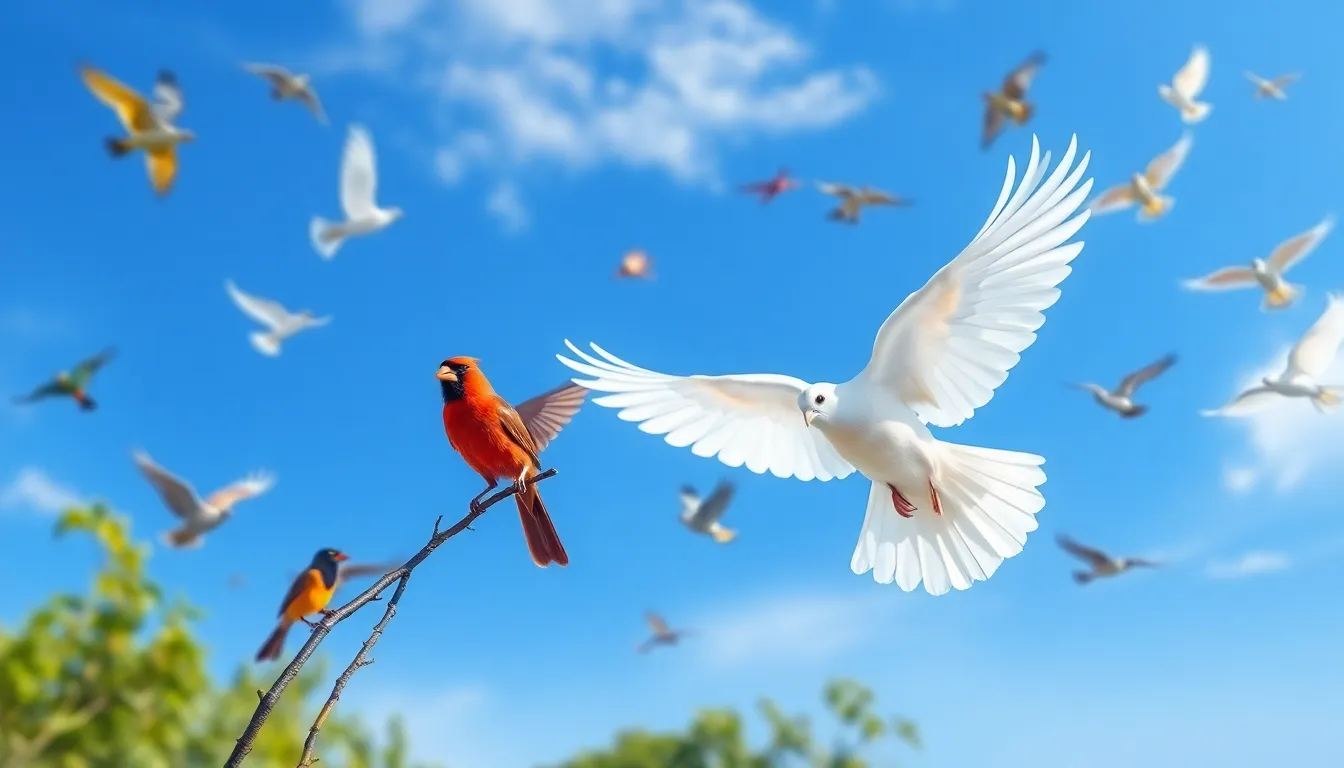
Bird symbols penetrate our psychological industry through multiple pathways that connect conscious awareness with deeper mental processes. Modern psychology recognizes these avian representations as powerful archetypes that influence our emotional responses and behavioral patterns.
Dreams and Subconscious Meanings
Dreams featuring birds often reveal complex psychological states that our conscious minds struggle to process. Flying birds typically represent our desire for freedom from constraints or limitations we face in waking life. Caged birds frequently symbolize feelings of restriction or suppressed creativity within our personal or professional environments.
Predatory birds like hawks or eagles in dreams commonly indicate our need to gain perspective on challenging situations. These symbols emerge when our subconscious recognizes the importance of viewing problems from elevated vantage points. Dead or injured birds often represent lost opportunities or damaged aspects of our identity that require attention and healing.
Different bird species carry distinct psychological meanings in dream interpretation. Owls suggest our need to access hidden wisdom or confront truths we’ve been avoiding. Doves indicate our longing for peace or resolution in conflicted relationships. Ravens point to shadow aspects of our personality that demand acknowledgment and integration.
Color variations in dream birds amplify their psychological significance. White birds emphasize purity of intention or spiritual awakening within our subconscious processes. Black birds highlight repressed emotions or fears that influence our daily decisions. Brightly colored birds represent joy and creative expression seeking manifestation in our waking lives.
Personal Spiritual Connections
Individual relationships with bird symbols often develop through direct encounters that create lasting psychological impressions. Many people report feeling deep connections to exact bird species that appear during important life transitions or emotional challenges. These encounters frequently become personal totems that provide comfort and guidance during difficult periods.
Bird symbol meditation practices activate exact neural pathways associated with transcendence and inner peace. Visualizing soaring eagles stimulates areas of the brain linked to confidence and personal power. Focusing on dove imagery activates regions associated with compassion and emotional healing within our neural networks.
Personal bird symbols often emerge through synchronistic experiences that feel meaningful beyond coincidence. Repeated sightings of particular species during decision-making periods create psychological anchors that influence our choices. These connections develop into internal guidance systems that help us navigate complex life situations with greater clarity.
Therapeutic applications of bird symbolism demonstrate measurable psychological benefits in clinical settings. Patients working with bird imagery report increased feelings of hope and emotional resilience. Art therapy sessions incorporating bird symbols show improved outcomes for individuals processing trauma or grief-related experiences.
Childhood exposure to bird symbols creates lasting psychological imprints that influence adult spiritual practices. Early positive associations with bird imagery often develop into lifelong sources of comfort and inspiration. These foundational connections shape our capacity for hope and our belief in transformation throughout our psychological development.
How to Choose the Right Bird Symbol for Your Purpose

Selecting the appropriate bird symbol requires understanding your exact intention and audience. We must consider the cultural context where the symbol appears, as different societies interpret bird imagery through unique historical and spiritual lenses.
Identifying Your Core Message
Define your primary objective before exploring bird symbolism options. Marketing campaigns benefit from eagles when conveying strength and leadership, while doves communicate peace and harmony effectively. Corporate branding professionals choose falcons for precision and speed, whereas owls represent wisdom and intelligence in educational contexts.
Religious organizations frequently select doves for spiritual messaging, and environmental groups prefer native species that resonate with conservation efforts. Personal spiritual practices often connect with birds that appeared during important life moments or recurring dreams.
Matching Cultural Context
Research your target audience’s cultural background to avoid misinterpretation. Western audiences associate ravens with mystery and prophecy, but some cultures view them as harbingers of misfortune. Eastern traditions celebrate cranes as symbols of longevity and good fortune, while Western interpretations focus on grace and patience.
Indigenous communities maintain exact relationships with certain bird species through ancestral traditions. We recommend consulting cultural experts when creating symbols for diverse audiences or sacred contexts.
Considering Visual Impact
Evaluate the bird’s visual characteristics against your design requirements. Eagles provide bold, recognizable silhouettes perfect for logos and emblems, while hummingbirds offer delicate details suitable for artistic applications. Ravens create dramatic contrast in black and white designs, and peacocks deliver vibrant color symbolism for luxury branding.
Simple bird forms work effectively at small sizes for digital applications, whereas detailed illustrations serve print materials and large-scale installations better. Typography integration requires birds with clean lines and distinctive shapes.
Practical Application Guidelines
| Purpose | Recommended Birds | Symbolic Meaning |
|---|---|---|
| Corporate Leadership | Eagle, Falcon | Power, Vision, Authority |
| Peace Initiatives | Dove, Swan | Harmony, Reconciliation, Purity |
| Educational Content | Owl, Raven | Wisdom, Knowledge, Intelligence |
| Environmental Causes | Local Native Species | Conservation, Natural Balance |
| Spiritual Practice | Phoenix, Crane | Transformation, Renewal, Enlightenment |
| Artistic Expression | Peacock, Hummingbird | Beauty, Creativity, Inspiration |
Test your chosen symbol with focus groups representing your intended audience. We’ve observed that symbols resonating personally create stronger emotional connections than aesthetically pleasing but culturally disconnected choices.
Long-term Considerations
Evaluate how your selected bird symbol ages with changing cultural perspectives. Phoenix imagery remains timeless across generations, while exact species popularity fluctuates with environmental awareness trends. Classic choices like eagles and doves maintain consistent recognition value, whereas exotic birds may require ongoing cultural education.
Consider trademark implications when choosing commercially used bird symbols. Popular species like eagles face crowded trademark landscapes, while lesser-known birds offer unique positioning opportunities with stronger legal protection potential.
Conclusion
Bird symbols continue to soar through our collective consciousness offering timeless wisdom and meaning across every aspect of human experience. We’ve seen how these powerful emblems transcend cultural boundaries while maintaining their profound ability to communicate complex emotions and aspirations.
Whether we’re drawn to the eagle’s strength the dove’s peace or the owl’s wisdom these symbols provide us with a universal language that speaks directly to our souls. Their presence in dreams art brands and spiritual practices demonstrates their enduring relevance in our modern industry.
As we move forward we can harness the groundbreaking power of bird symbolism to enrich our personal journeys and create deeper connections with others. These ancient messengers remind us that sometimes the most profound truths take flight on wings of symbolism guiding us toward greater understanding and purpose.
Frequently Asked Questions
What do bird symbols represent in different cultures?
Bird symbols carry diverse meanings across cultures. Eagles typically represent power and freedom in Western traditions, while doves symbolize peace and spirituality globally. Ravens embody wisdom and mystery in Norse mythology, and owls are associated with knowledge in ancient Greek culture. Eastern cultures like China view phoenixes as symbols of harmony and rebirth.
How are bird symbols used in modern branding and marketing?
Companies leverage bird imagery to convey specific values and create emotional connections with consumers. Twitter uses a bird logo to represent communication and freedom of expression. American Eagle Outfitters employs eagle symbolism to suggest strength and American values. Birds offer versatile branding opportunities across various industries.
What psychological meanings do birds have in dreams?
Flying birds in dreams often symbolize desire for freedom and transcendence, while caged birds represent feelings of restriction or limitation. Owls may suggest hidden wisdom or intuitive insights. Doves typically indicate longing for peace or reconciliation. The specific bird species and dream context influence the psychological interpretation.
Which bird symbols are best for corporate branding?
Eagles work well for leadership and authority-focused brands, conveying strength and vision. Doves suit peace-oriented organizations and humanitarian causes. Owls are ideal for educational institutions and wisdom-based services. Ravens can represent innovation and intelligence for tech companies. Consider your audience and cultural context when choosing.
How do Indigenous cultures interpret bird symbolism?
Indigenous American cultures have rich bird symbolism traditions. The Thunderbird represents divine power and protection in Plains tribes. Eagles serve as sacred messengers between earthly and spiritual realms. Quetzalcoatl (feathered serpent) symbolizes wisdom and renewal in Mesoamerican cultures. Each tribe has unique interpretations based on their spiritual beliefs.
What role do birds play in religious symbolism?
Birds serve as powerful religious symbols across faiths. Christianity features doves as representations of the Holy Spirit and divine peace. Hinduism includes Garuda as Vishnu’s divine mount. Norse mythology portrays ravens as Odin’s messengers. These symbols often represent the connection between earthly and divine realms in spiritual contexts.

